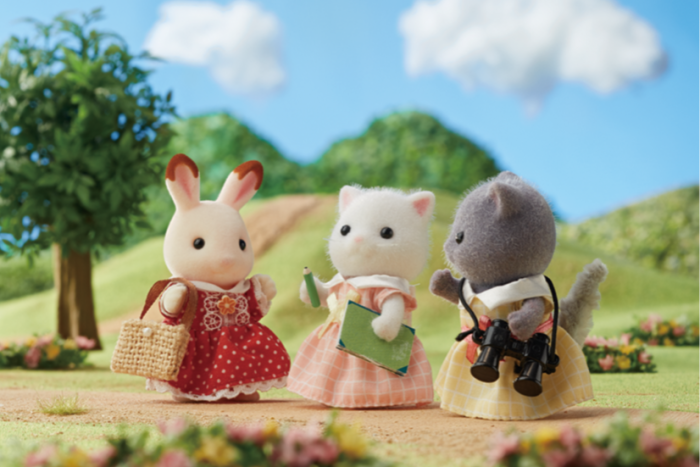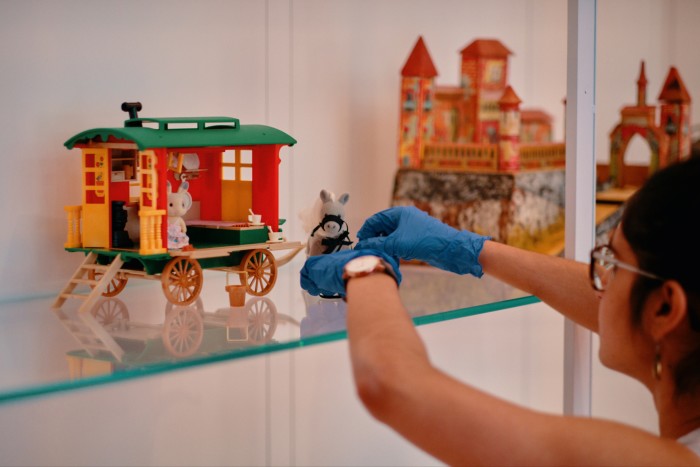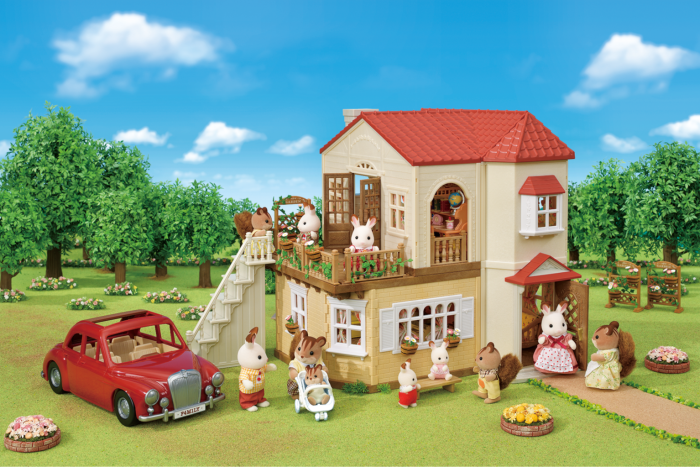The eternal joy of Sylvanian Families

Roula Khalaf, Editor of the FT, selects her favourite stories in this weekly newsletter.
Every now and then I get a call from my father. He wants to know about my Sylvanian Families. “They’re gathering dust,” he says. “Don’t you want someone to enjoy them?” I wish I could be so selfless. But for now my collection – the Honeybears, the Puddlefords, the old village shop – remains in his attic.
Besides, one day someone will enjoy them – either my children (if I have them) or a friend’s. The idea is to pass Sylvanians on. First made in 1985, these fuzzy palm-sized creatures are the product of Epoch, a Japanese toy and computer-games company. Sylvanian comes from the word “sylvan”, meaning “of the forest”; although you should take this etymology with a pinch of salt. The Sylvanian clan is not only made up of families of rabbits, squirrels and mice, but also of pandas, penguins and seals. All coexist happily in bedrooms across the world.

I last revisited my collection in April, when the world’s only independent Sylvanian shop shut its doors after its owners retired. The store, which opened in north London in 1992, is etched in the minds of fanatics across the globe: the green-and-white-striped awning; the floor-to-ceiling shelves, each crammed with toys; the detailed displays. It was the kind of shop front that could make a grown man squeal. I certainly did every time I walked past it. News of its closure sparked hundreds of final pilgrimages, with fans travelling from as far as Australia.
More broadly, UK sales of Sylvanian figures (from £7.99) have increased around 50 per cent over the past 10 years. Epoch reported record years in 2020 and 2021, and the brand remains one of the UK’s top five doll makers, according to The NPD Group.
Why do these little animals hold such weight? Allow Elsie, 10, to explain: “My sister and I spend hours taking their clothes off and swapping them around,” she says of her collection of rabbits and bears living in tiny plastic cottages. “I love all the adventures they go on.” Sylvania is indeed an open-ended world: jump on the gaily coloured canal boat and choose where it goes. It’s also a highly detailed universe: my village store came with shelves, provisions and a moving set of scales; a cosmetic counter comes with tiny bottles of nail polish. Adds Charlotte, Elsie’s mother: “I love that they’re something to treasure in a world where so many things are disposable.”
“Children have always chosen animals,” says Katy Canales, project curator at Young V&A, which reopens today in east London following a £13mn renovation. “They’re cute, they’re cuddly, but there’s also that anthropomorphic element. It gives a greater sense of freedom than having to adhere to the rules of being human.” As part of the museum’s new Imagine gallery, members of the Corntop and Snow-Warren rabbit families are displayed alongside a caravan and pony. The gallery is designed to show small-world play, where children use props to create intricate worlds. “[Sylvanians] are as flexible as a child’s imagination,” says Canales.

From 1999 to 2013, Sylvanians were designed in the UK by a company called Flair, giving rise to some of the more British elements (the caravans, canal boats and racing-green Morris Minors). Among the team were Ed Nattrass, Jo Gough and Lindsay Hardy, whose stories of working at Flair are almost as delightful as the toys themselves. “Sometimes the names were absolutely hilarious,” says Hardy over a group call. “When we did the pig family, the father was called Richard E Grunt and the son was Hugh Grunt.” Staff members were also immortalised: Hardy was a baby guinea pig (the “loud and boisterous” Lindsay Pettyfur), while Nattrass became Uncle Edward Mulberry, a toymaker. “It’s an honour,” he says wistfully.
In many ways, Sylvania is almost draconian in its pleasantness. Every character comes with a name and biography, and everyone contributes to village life. Because I am deeply fastidious, these stories were played out in minute, faithful detail: Ebb Vandyke, the otter father, was always stoic in guarding the river. (“He gets very cross when he sees rubbish floating on the water” went his bio.) Flo, his wife, ran dutiful swimming classes. There was a policeman, a badger called Bobby Roberts, but he rarely caught anyone. Suffice to say, crime was thin on the ground.

Design has subsequently moved back to Japan. One of Sylvanian’s most fervent collectors recently put his entire hoard up for sale, citing Epoch’s new direction as “too plastic, girly and pink” and “negative energy from a small group of collectors” as reasons for no longer enjoying the world. It’s true that the world is a little pinker – new releases include a “Floating Cloud Rainbow Train” and “Baby Mermaid Castle” – but the core collection of red-roof cottages, bushy-tailed squirrels and log furniture lives on.
I ask Hardy why we haven’t seen the toys migrate to the city in sparkling limousines or space ships. “It wasn’t that kind of fantasy,” she says. “It wasn’t pretty pink castles, unicorns or fairy dust – it was more of a village fête.” The Sylvanian life is a moral one; some might call it banal. But with that comes a potential to make whatever you want of it. Sylvanians weren’t fashionable, but they never went out of fashion. It’s their banality that makes them immortal.
Comments